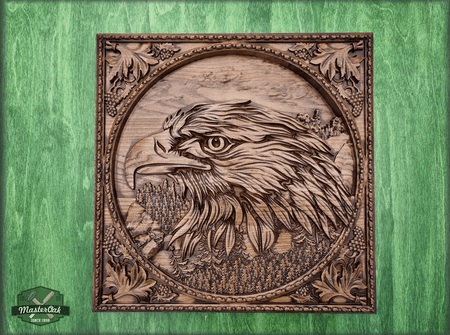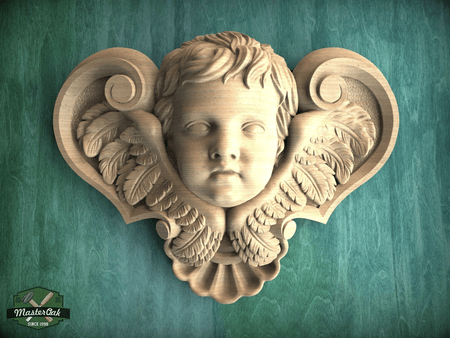Wood carving is a timeless craft that combines artistic expression with the tactile beauty of wood. Whether you are a beginner looking to start your first project or an experienced carver refining your craft, the choice of wood can significantly impact the outcome of your work. In this guide, we’ll explore the best types of wood for carving, focusing on their availability, workability, and finish.

Click https://masteroakco.com/ to explore Master Oak Co.
What Kind of Wood for Carving Should You Choose?
When selecting wood for carving, consider the wood’s hardness, grain structure, and cost. Softwoods, like pine and cedar, are generally easier to carve but might not hold detail well. Hardwoods, such as oak and walnut, offer beautiful grain patterns and durability but require more skill to carve.
Ideal Woods for Beginners and Professionals
- Basswood: Known for its fine, even texture and minimal grain, basswood is the top choice for beginners due to its softness and ease of handling.
- Butternut: This wood is slightly harder than basswood but still soft enough for detailed carving. It has a beautiful, light tan color and a grain pattern that enhances the aesthetics of the carved piece.
- Cherry: Cherry wood is a hardwood that carves well with sharp tools and ages to a rich, reddish-brown hue. Its smooth grain allows for fine detailing, making it popular for decorative pieces.
What Wood to Use for Wood Carving Projects
Choosing the right wood depends on the project’s requirements. For intricate carvings, like those used in relief work or sculpture, select a wood that is not only soft but also stable enough to maintain the integrity of the details over time.
Comparing Wood Characteristics
- Maple: Known for its strength and hardness, maple is excellent for projects requiring a smooth finish and fine details.
- Walnut: Offers a rich color and grain, ideal for pieces that benefit from a striking natural appearance. Walnut is moderately hard, making it suitable for both beginner and advanced projects.
Where to Buy Butternut Wood for Carving
Butternut wood is prized among carvers for its workability and subtle grain. Finding high-quality butternut wood can be a challenge, as it is less common than other carving woods.
Sources for Quality Butternut Wood
- Specialty Wood Suppliers: These suppliers often stock a range of carving woods, including butternut. They can provide you with various sizes and quality grades to suit your project needs.
- Online Retailers: Websites that specialize in woodworking materials are a convenient option, though it’s crucial to ensure the quality through customer reviews and clear product descriptions.
- Local Woodworking Shops: Some local shops offer selections of specialty woods and can be a great resource for advice and community connections as well.
Carving wood like butternut from reputable sources ensures that the material is sustainably sourced and of high quality, which is critical for achieving the best results in your carving projects.
How to Prepare Wood for Carving
Before you begin your wood carving project, preparing your wood properly can make the carving process smoother and more enjoyable. This preparation includes selecting the right cut, drying the wood adequately, and ensuring it is free from defects.
Steps for Preparing Wood:
- Selection: Choose wood blocks free from knots and cracks, as these can disrupt the carving process and weaken the final product.
- Drying: Properly dried wood minimizes warping and splitting as you carve. Use kiln-dried wood if possible, or allow air-dried wood to reach an equilibrium moisture content.
- Sealing: Apply a sealant to the ends of the wood to prevent the absorption of moisture, which can lead to cracking.

Techniques and Tools for Effective Wood Carving
Carving wood is not just about the material but also the technique and tools used. Different carving methods, such as whittling, relief carving, and chip carving, require different types of tools.
Essential Carving Tools:
- Carving Knives: A basic tool for detailed and intricate designs, especially in softer woods.
- Gouges: Curved tools that are ideal for creating rounded cuts and hollows in the wood.
- Chisels: Used with a mallet to remove larger chunks of wood, perfect for rough shaping.
Techniques to Master:
- Stroking Technique: Learn how to manipulate the direction and pressure of your carving strokes to enhance detail and precision.
- Grain Direction: Always carve in the direction of the wood grain to prevent unwanted splintering and achieve smoother cuts.
Preserving Your Wood Carvings
Once your project is complete, proper finishing and preservation are crucial to protect the wood and enhance its natural beauty.
Finishing Techniques:
- Sanding: Start with a coarser grit and move to a finer grit to prepare the wood for finishing.
- Oiling: Application of natural oils, like linseed or walnut oil, can bring out the color of the wood and provide a protective coating.
- Sealing: A final sealant, such as a wood-specific lacquer or varnish, will protect your carving from moisture and wear.
By following these guidelines and using the recommended techniques and tools, your wood carving projects can be both beautiful and durable.
In conclusion, whether you choose basswood for its ease of use or butternut for its aesthetic appeal, understanding the properties of various carving woods is crucial for selecting the perfect piece for your home or as a gift. At MasterOak, we are dedicated to offering high-quality, sustainably sourced wood carving products that are not only beautiful but also built to last. Our range of finely crafted items ensures that you can enjoy the art of wood carving without the need to create from scratch, while still appreciating the material’s natural beauty and durability.
